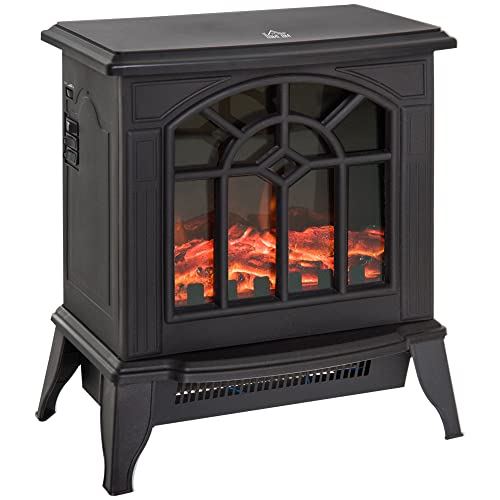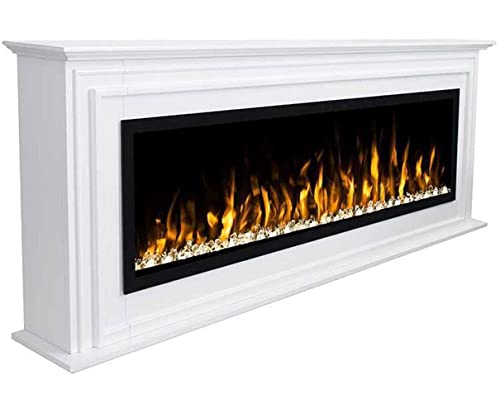This company has no active jobs
0 Review
Rate This Company ( No reviews yet )
Information Company
- Total Jobs 0 Jobs
- Full Address 62 Mcdowall Street
Something About Company
10 Wrong Answers To Common Wood Burner Fireplace Questions Do You Know The Right Ones?
How to Get the Most From a Wood Burner Fireplace
Unlike traditional open fireplaces wood stoves are engineered and designed to burn firewood. This allows them to meet tighter emissions regulations.
Wood burning stoves emit sparkling yellow flames and soft crackling sounds. They also give a primal feeling of warmth. The smoke that is generated contains toxic air pollutants like formaldehyde and benzene as well as polycyclic aromatic hydrocarbons.
Efficient
Fireplaces and stoves that burn wood offer a stunning and natural heat to the home, they are also incredibly efficient. A top-quality wood burner could have an Ecodesign rating up to 77 percent. It is crucial to get the most benefit of your wood burner in light of rising energy costs. The good news is that it’s easier than ever to do!
The moisture content of firewood is a key factor that determines the efficiency of a wood-burning stove is. We recommend using only well-seasoned wood that has been dried over a period of at least one year and in some cases, two years. The dryer the wood is, the more efficiently it burns, which means less smoke and harmful emissions.
Another great benefit of a wood-burning stove is that it’s an eco-friendly source of fuel, which is excellent for the environment. By purchasing locally sourced wood, you can also help to contribute to the active conservation and management of forests. This is great for wildlife.
In terms of maintenance concerned, the primary requirement of a wood burner is to frequently take out and dispose of the ash. It can be a bit of a hassle but it’s worth it to ensure you get the most heat from each log. If you wait for the ashes to cool completely, they can also be utilized as a non-toxic and green melting ice. They can also be used to polish jewellery and absorb odors.
A fireplace with a wood burner is a truly timeless classic. Although they’re less well-known than gas fireplaces and stove, the appeal and appeal of a fire that is roaring can’t be ignored. They’re perfect for cosying in the cold winter nights and are a perfect way to create a warm and inviting space inside your home. Invest in a quality wood stove and you’ll be reaping the benefits for many years to be! Our expert chimney sweeps are on hand to help you get the most out of your stove – give us a call today to find out more.
Low Carbon
Wood burners that are efficient and clean are the most efficient option to save money while also keeping your home warm. They also aid local woodland management. This is a fantastic way to support the wildlife that lives in your neighborhood.
Wood-burning fireplaces and stoves create minimal pollution when they are maintained properly and used with dry, seasoned firewood. However, if they’re not maintained properly or are made of poor quality wood the smoke that is produced by them is contaminated with fine particles (known as particulate pollution) that can irritate the lungs and other organs. Carbon monoxide, air pollutants that are toxic like formaldehyde and benzene and polycyclic aromatic hydrocarbons are also present. Inhaling this kind of air pollution can cause irritation of the lungs as well as wheezing, coughing, and asthma attacks. It can even cause serious health issues such as cancer, heart disease, or premature death.
Some people are worried that wood-burning stoves can cause climate change However, this isn’t true. Burning wood is a carbon neutral energy source. The tree absorbs carbon dioxide over its life. When it is burned the carbon dioxide is released into the atmosphere.
Since the wood is sourced locally, this reduces the amount of pollution that is released during transportation. It is essential to select hardwoods that are seasoned and of high quality. They burn longer and more evenly than softwoods.
Modern, EPA certified wood stoves and heaters (such as those manufactured by Charlton & Jenrick) have considerably lower emissions than earlier stoves. They have been certified to meet 2020 EPA standards, which are considerably stricter than previous emission limits.
All wood burning stoves should be fully vented to the outside of your home to ensure that they don’t create a haze of exhaust within your home. By keeping the flames away from the logs and ensuring that you use dry, seasoned and dry wood, all of our current clean burn and DEFRA exempt stoves are capable of producing very clear exhaust. They also have particle levels of 60% or more below the DEFRA limit.
A wood burning stove equipped with an acatalytic converter or hybrid unit can offer the ultimate low-carbon option for heating. These units re-ignite the gases and particulates that were ignited during the initial combustion at a later stage by mixing them with superheated air. They then channel the remaining particulates and gasses through a catalytic combustor to create a third and final combustion, further the reduction of emissions to levels much lower than the standards set by the government.
Clean Burn
Cleanburn wood stoves burn fuel at the highest efficiency possible. This results in a minimum amount of particles emitted into the atmosphere when burning wood. The stove’s air management system regulates the intake and exhausting of gases, making sure that the combustion process occurs in a closed, controlled atmosphere. It also regulates the flame height to minimise emissions and maximise heat output.
This means that your chimney and the surrounding area will be much cleaner than older stoves. Particulate matter (also called particle pollution) caused by incomplete combustion of wood can cause respiratory problems like coughing and wheezing in people and contributes to the development of heart diseases, stroke, diabetes and other serious health issues. Wood burning also contributes to poor air quality in cities.
Smoke from poorly combusted wood contains fine particulate pollutants and dangerous air pollutants like carbon monoxide as well as other harmful air pollutants such as nitrogen oxides, volatile organic compounds (VOCs), benzene, and formaldehyde. These particles can reach deep into the lung and other organs, causing damage, discomfort and even death. Airborne dust can also damage surfaces in your home and give them a rough sensation.
It’s important to use only high-quality, seasoned and dried firewood when you use your wood burner fireplace. Hardwoods such as oak beech, ash and are the best for heating. Hardwoods have a higher density and BTU content and they provide more heat than softwoods.
Check with your local authority to see whether they have rules concerning wood burning. These rules may include rules regarding odors and nuisances and visible smoke emissions or smoke opacity restrictions.
It is essential to keep the glass of a stove with an open front that is free of grime and deposits. You can use a dry towel or oven cleaner spray for this. You can also add bicarbonate soda mixed with water to the glass.
Regular maintenance is crucial for your chimney and stove. This includes regular chimney cleanings that remove creosote and ensure proper functioning of your flue. It is also important to mark the dates of periodic inspections on your calendar. This will allow you to avoid costly repairs and prolong the life of your wood burner.
Low Maintenance
Wood burning fireplaces are popular because they provide a natural warmth. However, this kind of fire requires a bit of upkeep and maintenance. The chimney, flue, and stove are all potential sources of house fires if not maintained and cleaned regularly. Fireplaces are also a great source of heat when the power goes out, especially in winter when snowstorms can cause branches to fall from trees and knock down under-hanging power lines.
Using a wood stove for heating will reduce your carbon footprint significantly in comparison to other fossil fuel sources like gas. Modern wood stoves and inserts are designed to meet EPA (Environmental Protection Agency) standards which mean they produce very low emissions. The more well-seasoned wood that you use, the more efficient the stove will be. You’ll require less wood to generate the same amount of heat.
The fireplaces require some care and maintenance. They must be kept clear of materials that ignite and have a screen installed. The flow of air will be improved by keeping the grate free of ash and debris. This will ensure that the fire is burning longer and your home in good order. It is important to have your stove and chimney swept at least twice per year to avoid creosote accumulation that could create an fire hazard or blockage and hinder the airflow.
A wood-burning stove will need to be maintained on a regular basis and it may take time for a new homeowner to master the art of how to light, ignite and maintain a constant fire in the fireplace. Once you’ve mastered the art of building and maintaining an open flame in your wood burner, it can be a source of enduring pleasure that will provide heat and warmth for your home every year.
 Wood burning fireplaces are around in a variety of forms or styles for more than 500 years. They’ve gained a lot of attention due to their efficiency, sustainability and the natural warmth that comes from wood. If you’re thinking about buying the purchase of a new heater, consult with your local certified Regency dealer to learn more about the advantages of a wood stove or insert for your home.
Wood burning fireplaces are around in a variety of forms or styles for more than 500 years. They’ve gained a lot of attention due to their efficiency, sustainability and the natural warmth that comes from wood. If you’re thinking about buying the purchase of a new heater, consult with your local certified Regency dealer to learn more about the advantages of a wood stove or insert for your home.





